When you bring any kind of dairy animal home whether it be cow, goat, camel, or buffalo, you are signing up for a very big commitment. Aside from the fact that an animal has to be bred and give birth in order to produce milk, then you have to milk! This is a 1-2 time per day commitment that is non negotiable and must be done.
Every dairy animal has its own pros and cons but the two “biggies” you hear about are goats and cows. Each animal has its own appeal, and when you dive into the differences, they go beyond just the animal itself. From the makeup of the milk to the needs of the animal, there are significant differences. In the end, we decided to go with goats because we felt they best suited our landscape, available space, and milk needs.
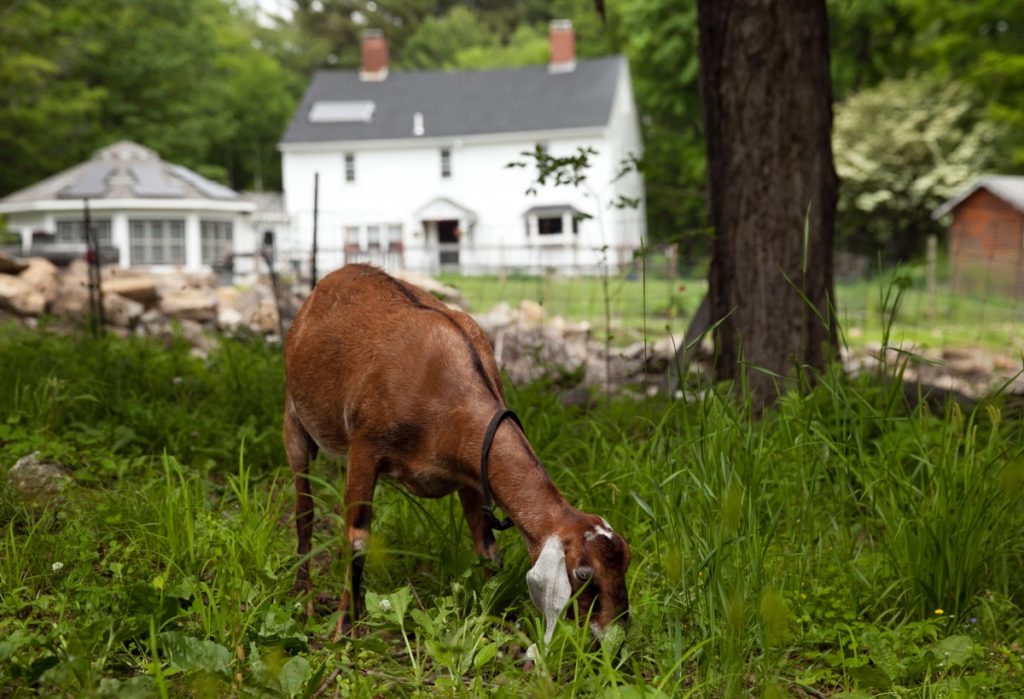
Pasture Accomodations
When you first decide to bring home a dairy animal there are a lot of considerations that need to be made. But, a realistic look at your available space and pasture quality should be the first thing. Cows need significantly more space than goats, a bigger animal = more space required. Under prime pasture conditions you are looking at one cow requiring ~2 acres, versus 4-8 goats per acre. Again, this is prime pasture conditions, and assuming you don’t want to feed out hay all year round. In addition, bigger animal = more food required. Whether that be during the summer months or the winter, a larger animal is going to eat more. We can’t forget those cold barren months (for us northerners) when pasture is nonexistent and hay is the source of feed to replace that summer pasture. A cow will go through significantly more hay than a goat!
When we first bought this place, we didn’t have one square foot of pasture, we barely had a front lawn. The property was so overgrown and neglected, it was nothing but brush and woods where pastures once sprawled. So, our landscape and terrain essentially made the decision for us. Our property was not well suited for a dairy cow, and it would have had to be fed hay year round even in the summer months. The goats however, were able to help clear our overgrown land by rotating them around our property which provided their sole source of food for the entire spring, summer, and early fall WIN-WIN.
Pasture space aside, there is the actual terrain to take into consideration as well. While cows are certainly equipped to handle less than ideal terrain, they are in noway as adept to handling our rocky landscape like goats. Boulders, hills, stonewalls, these don’t even phase our goats while they may limit a cows ability to graze. The goats on the other hand LIVE to play on rocks! Or stumps, or anything else they can jump on. Their surefooted nimble bodies paired with an ability to eat nearly any kind of vegetation makes them the best land clearers possible.
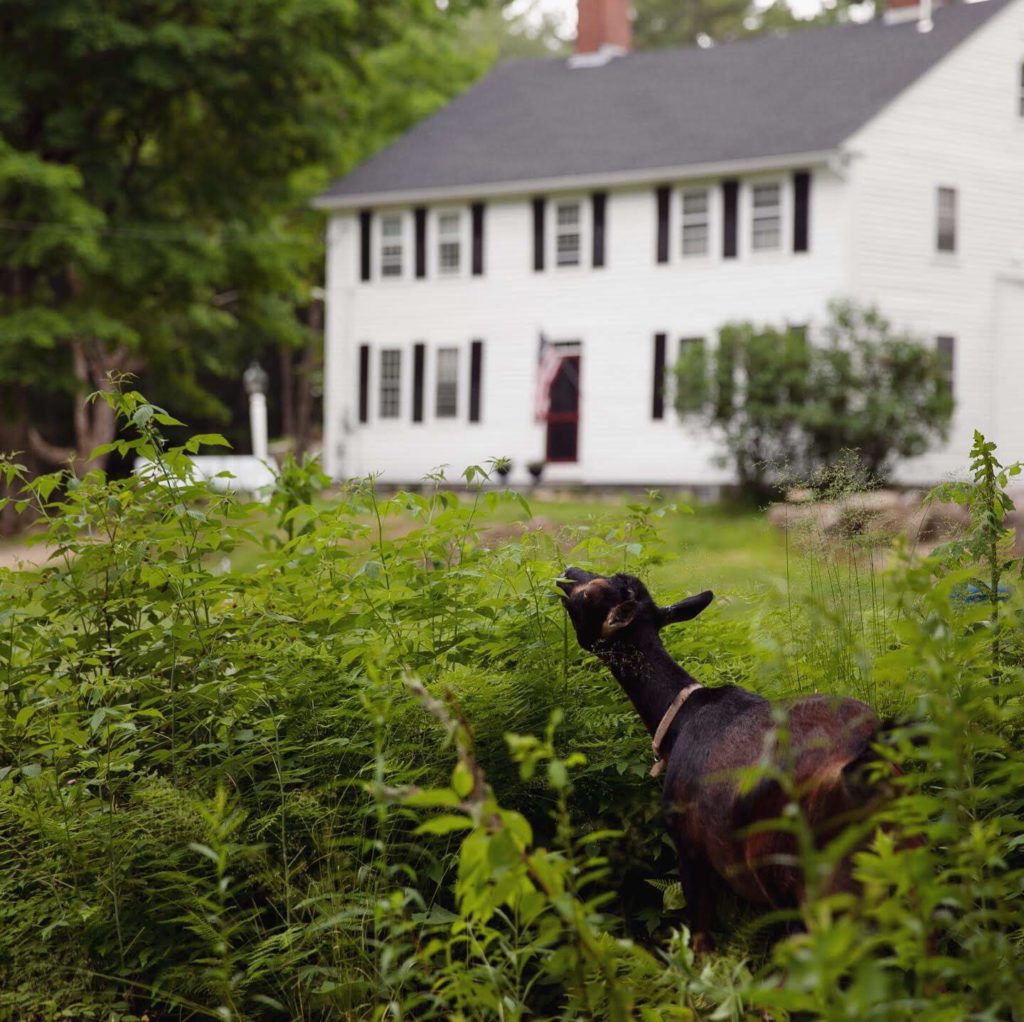
Breeding
In addition to pasture accommodations, one thing you really need to take into consideration is the breeding aspect of your dairy animal. Whether it be a goat or a cow, an animal needs to give birth in order to produce milk so breeding is a necessary part of the process! With a cow, unless you want to go the AI route, you need access to a bull. Depending on where you’re at geographically, if there isn’t someone that offers a stud service then you would have to invest in one. This means you’re bringing on two cows versus one, doubling your pasture requirement not to mention strong fencing. Then, once they do get pregnant and deliver, you have a calf to contend with. Your options are to keep and raise it for either slaughter or future milking (adding on another body to pasture!) or you sell the calf once its weaned. Is there a market in your area to sell? These are all very real concerns to take into consideration before choosing what species to keep.
For me, keeping a buck on site is not a imposition as he doesn’t require much space or have the pasture and hay demands a full sized bull would. Even without keeping a buck onsite, there are plenty of people who offer their bucks for stud services so that I could easily breed my does. There is also a very good market for baby goats, so I sell them after they have been weaned by their mother which helps offset some costs of feed/care of my doe through her pregnancy. I know that I have to breed every year to get milk, so having the ability to do so without worrying I won’t be able to find a sire, or that I will have a bunch of babies born that I can’t sell is very reassuring.
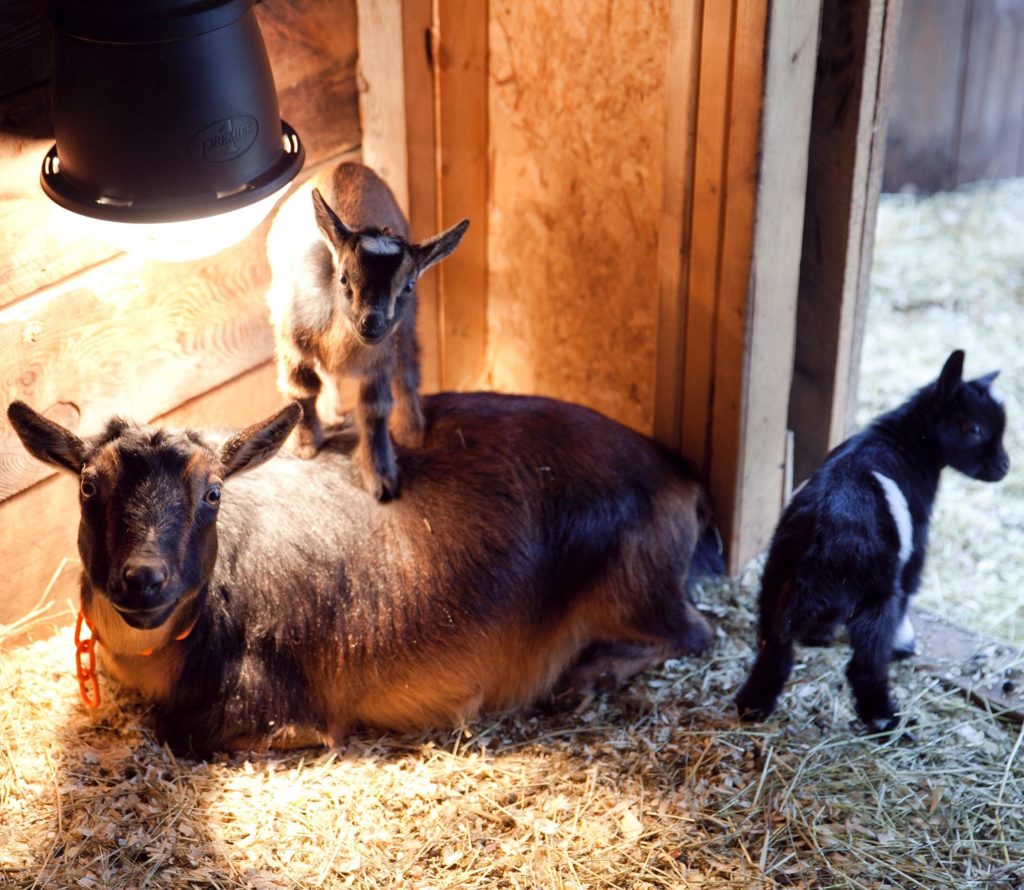
The Milk
Now, let’s get down to the brass tacks here – the milk. After all, isn’t that why you are here? Let me just preface this paragraph by saying this: GOATS MILK DOESN’T TAKE LIKE A GOAT. Well, good goats milk at least. If you tasted goats milk that was “goaty” then one of a few things happened. It was either improperly handled/stored after milking, the doe was in very close proximity to a buck, or the milk is starting to get a little old and it’s developing a strong taste. I personally have had raw fresh cows milk that also developed an off taste, due to it sitting in the fridge for two weeks. This happens with raw milk (which we drink) regardless of the species.
Now that we got that out of the way, first and foremost one thing to consider is the volume of milk you need. There are so many variations depending on choice of breed as well as the genetics, but figure a cow is going to give you roughly a gallon of milk a day at least. Whereas with a goat, you could range from a quart up to over a gallon depending on the breed. In her peak last summer, Ruby gave a gallon and a half a day! For someone with several kids, a gallon a day is nothing and makes a dairy cow or large goat desirable. For others, that’s way more milk than they could never go through, and so one or two smaller dairy goats is much more feasible.
With that being said, there are differences in the milk itself in cow versus goat. Cows milk has large fat globules, versus goats milk where they are small. What does that mean? Large globules are harder to digest, and for some it wreaks havoc on their digestive system. If someone is lactose intolerant, in many cases they are able to drink goats milk! The smaller fat globules make it easier to digest and for our bodies to absorb the nutrients. In fact, when raising livestock if you end up with a bottle baby goats milk is always the preferred substitution to mothers milk because of its digestibility.
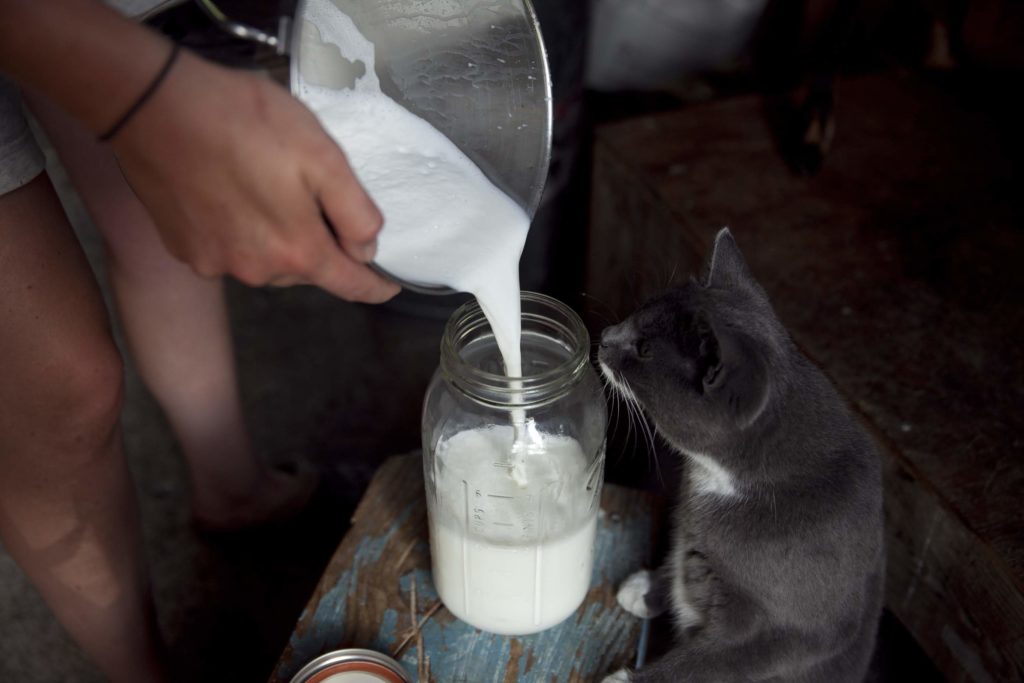
Fat globules aside, there is another distinct fundamental difference (that to some is a deal breaker) between cows and goats milk. Goats milk is naturally homogenized, whereas cows milk is non-homogenized. Meaning in cows milk the cream will naturally separate from the milk (in a day or less) and rise to the top allowing it to be skimmed off. Goats milk is naturally homogenized, meaning you do not get the separation of cream and milk like in cows milk. Now, if you let goats milk sit in the fridge for a few days undisturbed, yes it will eventually separate. But, having multiple jars of milk sitting in the fridge untouched for days just so you can separate some cream isn’t really realistic, or the freshest.
This is a major sticking point with some people on why they choose cows over goats for dairy – and rightfully so. Cream makes butter, and ice cream, and is fantastic in coffee. But, as I mentioned above, in some situations a cow isn’t a realistic option for dairy, and goats are much more suited. Just because you choose to raise goats though doesn’t mean you should be denied that delicious cream! Luckily, thanks to the invention of a cream separator you don’t have to! A cream separator is a mechanical devise that physically separates the cream from the milk. It can be used with fresh milk, or milk that’s been in the fridge (as long as its heated up). It can also be adjusted to regulate the thickness of the cream aka heavy cream or light cream. It takes some getting used to, and no it’s not as easy as just ladling the cream off the top like with cows milk. But, if you raise goats this is an extremely useful tool to have if you are wanting to capture that cream to make all the delicious things.
While there are certainly noted differences between cows milk and goats milk, you are still able to use either in any recipe. There may be some tweaks needed in the recipe, the process, or even small differences in the final result of a product. But raising goats for milk has not slowed me down in the slightest when it comes to making things like cheese or yogurt, nor have I ever had an issue substituting goats milk for cows milk in anything I’ve made. Remember, for half the year or more, it’s my sole source of milk!
Adding breeding stock to your homestead for dairy is a big financial and time investment. When making a decision on cow versus goat, cow versus sheep, or even between goat breeds decisions need to be made that are best suited for works for you. You need to take a realistic look at your situation and ask yourself how much property you have to dedicate to the animal, how much hay you’re willing to buy, how big of a shelter you can provide, or even how much milk do you really need? The answers to these questions will help guide you to what works best for you!
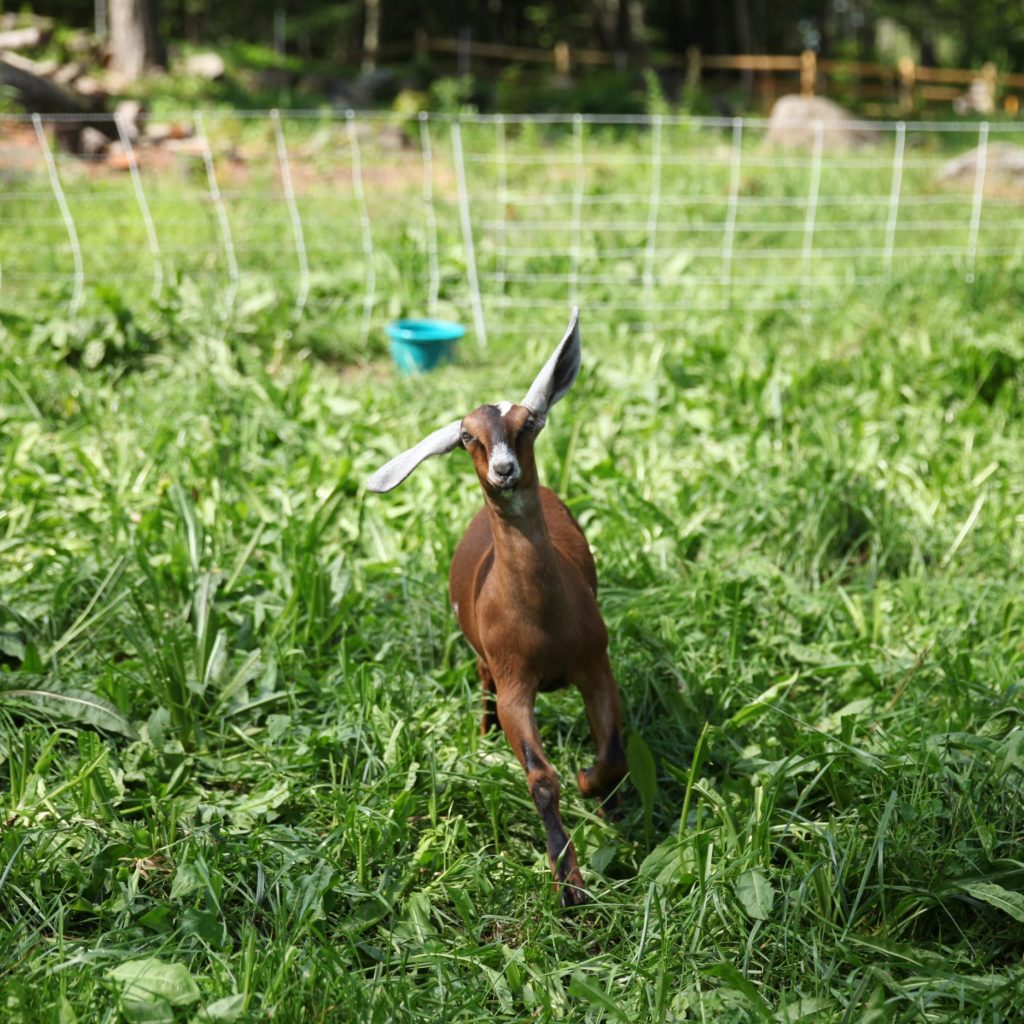
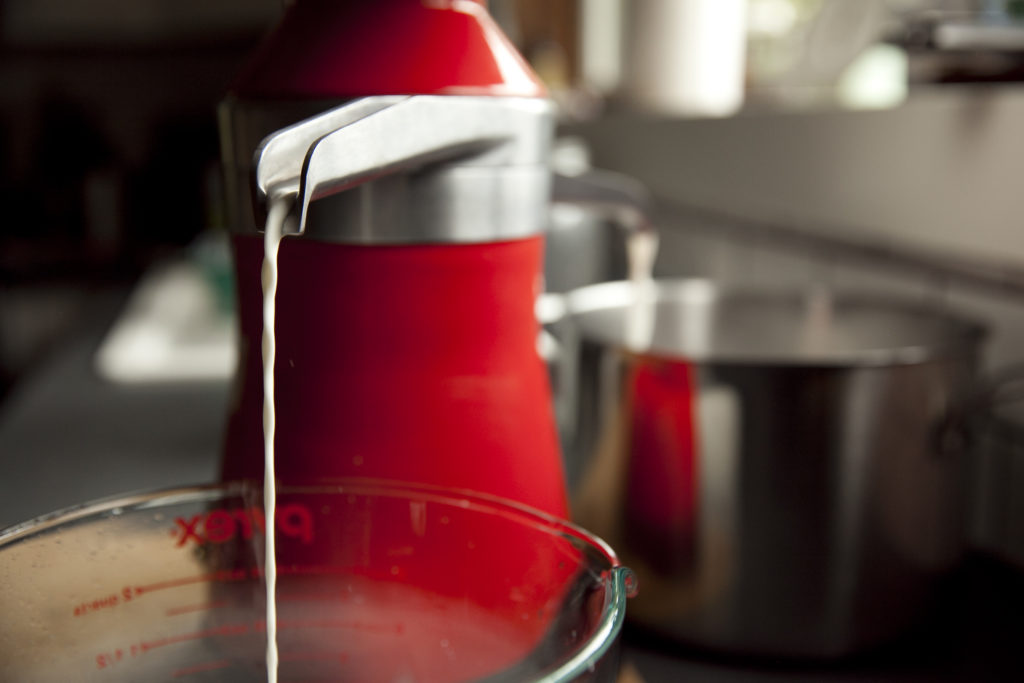
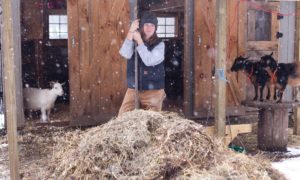
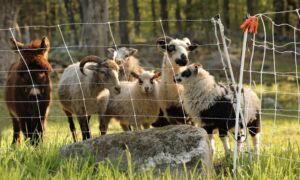
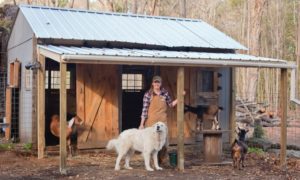
Great article. I have dairy goats as well. Smaller family size and acreage makes a goat the best choice for us!
Could you please link the cream separator you have? I’ve been thinking of getting one. We have removed the cream from some milk that got pushed to the back of the fridge and made the most delicious butter with it!
They really are ideal for small family/small land! The article includes the link to the separator! It’s in the paragraph that talks about it, and the photo itself is a link!
Pingback: How To Hand Milk a Goat - The Modern Day Settler